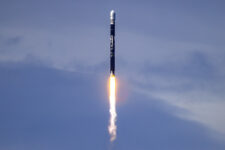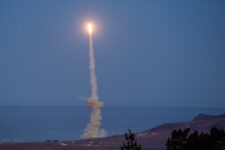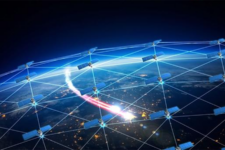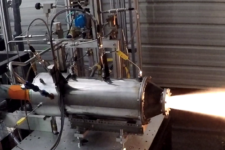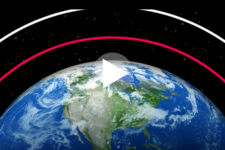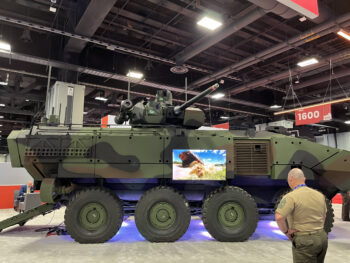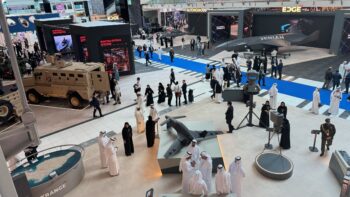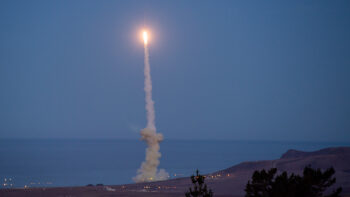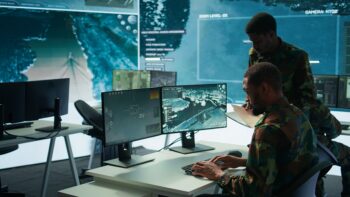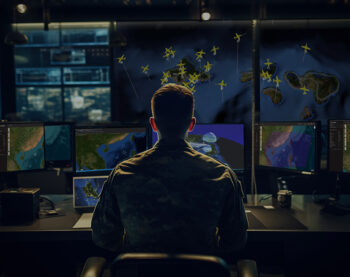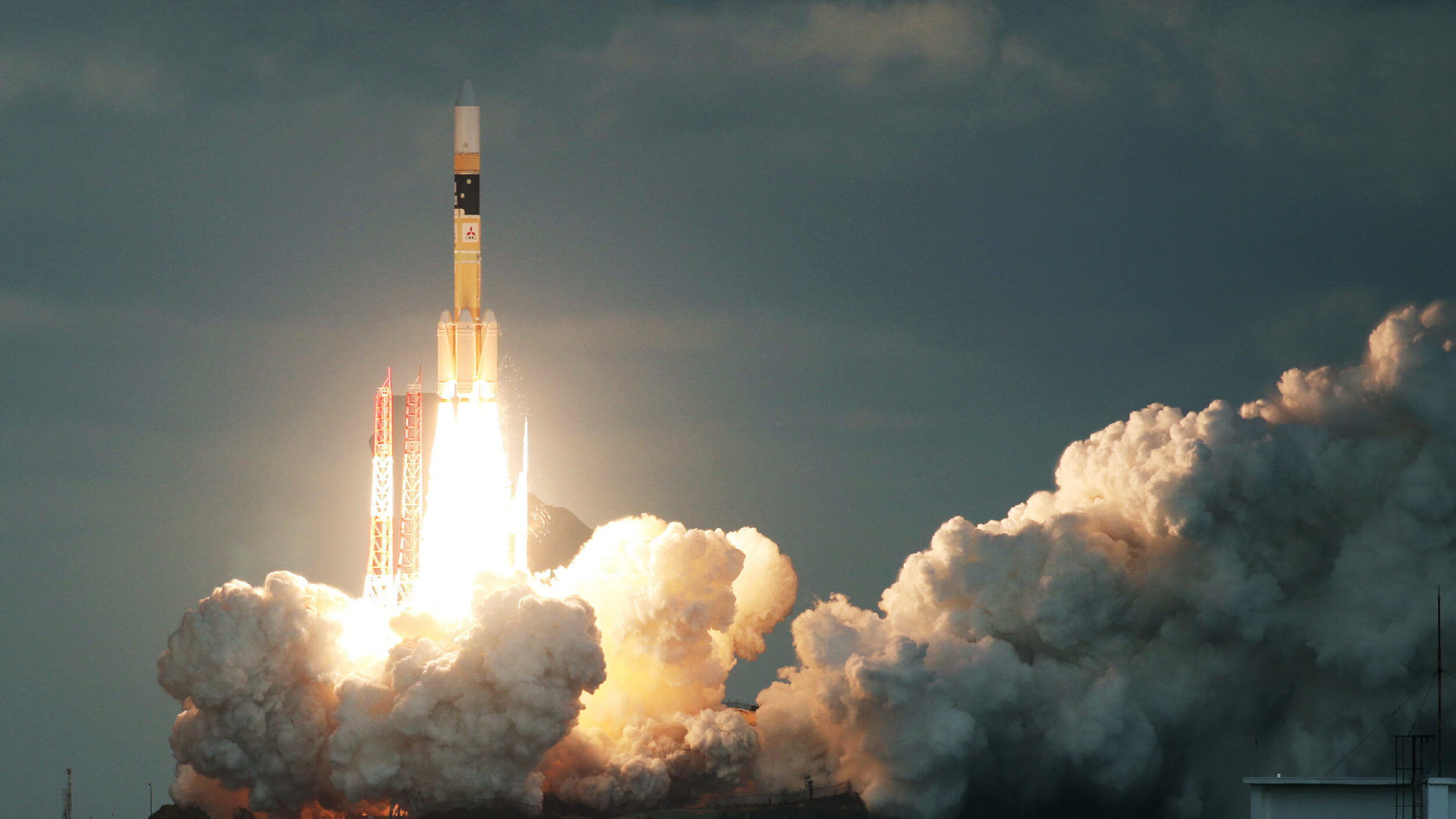
Japan’s H-IIA rocket carrying the Kirameki-2 satellite is launched from Tanegashima Space Centre in southern Tanegashima island, Kagoshima prefecture, on January 24, 2017. (Credit JIJI PRESS/AFP via Getty Images)
WASHINGTON: Japan’s defense ministry has signed up LeoLabs to provide space monitoring services for Low Earth Orbit — a first for the US firm whose only foreign customers up to now were civil space agencies, CEO Dan Ceperley told Breaking Defense.
“It’s a huge step forward for both Japan and for LeoLabs,” he said in an interview. “It’s a big acknowledgement that LEO is expanding rapidly. It’s of national importance. It’s of commercial importance. And there’s a need to have more eyes on the sky.”
LeoLabs, which has previously worked with US military researchers and runs a public dashboard tracking LEO space objects, will be providing the Japanese Air Self Defense Force with data on the whereabouts of satellites and space debris in Low Earth Orbit (LEO), warnings of potential collisions and even training, according to the company’s announcement today. The “multi-million” dollar contract was routed through ITOCHU Aviation Co., Ltd, a daughter firm of ITOCHU Corporation, one of Japan’s biggest “sogo shosha,” which are mega-corporations trading in a wide variety of goods and services.
“That’s a big part of the benefit,” Ceperley said, explaining that Japanese military personnel will be training on “an actual operating system” for space situational awareness (SSA) — rather than in a simulated environment.
“We’re delivering safety services to 60% of all the satellites in Low Earth Orbit, and they’re on contract using our safety services. We’ve supported the launch of over 50% of all the active satellites in Low Earth Orbit,” he said. “This is an active operational service for LEO, and to get trained on it means you’re actually training for the realities of the space environment and the space industry.”
LeoLabs currently has six radars located at sites in Alaska, Texas, New Zealand and Costa Rica. By the end of this year, Ceperley said, the firm will add four more radars at additional sites in Australia and the Azores in the Atlantic. The radar network today can keep tabs on space objects down to 10 centimeters in diameter, but LeoLabs has big plans for improving its capabilities for finding and tracking even smaller debris in the future.
Ceperley noted that the debris being tracked today by commercial firms and governments comprises only some 10% of all the space junk up there that can harm a satellite.
“The analogy that we like to use is if you’re driving down the freeway, with what you can see right now, everybody sees the trucks, but they don’t see the cars, they don’t see the motorcycles. You think you’re safe and it just not so,” he added.
The Japanese government, including both the defense ministry and the country’s space agency JAXA, has gone all in on beefing up its SSA capabilities in the past five or so years.
The defense ministry has been steadily growing its budget for space activities in general, but with a heavy concentration on SSA, since 2019. In 2022, MoD asked for ¥84 billion ($657 million) for all space-related activities, including ¥1.89 billion ($14.9 million) for a new laser-ranging system to help measure the whereabouts of space debris, according to a January report in the Japan Times.
The air force set up its first operational space unit, creatively named the First Space Operations Squadron, in May 2020, tasked with running a ground radar network and providing collision avoidance data that is supposed to become fully operational in 2023. The military currently operates four ground-based J/FPS-5 radar optimized for air and ballistic missile defense, but with space tracking capabilities. According to a study by the Paris-based Institut français des relations internationales [PDF], the MoD intends to build a new, more capable radar facility as well as launch an optical satellite for SSA between 2024 and 2028.
That unit has a specific mission to cooperate with both JAXA and the US. Japan in 2021 signed a cooperative agreement with Space Command and now has a liaison officer at the Multinational Collaboration Office at Vandenberg SFB.
A Second Space Operations is planned to keep tabs on electronic interference with Japan’s satellites sometime later this year, according to multiple Japanese press reports.
Meanwhile, Fujitsu Ltd. announced last month that it had completed development and delivery of an analysis system for JAXA to enable it to predict and report potential on-orbit collisions. JAXA operates a ground-based radar in Kamisaibara for monitoring LEO and a telescope in Bisei for tracking in Geosynchronous Orbit, as well as the Tsukaba Space Data Center near Tokyo — with updates to the system expected to become operational this year, according to the JAXA website.
As DoD shifts $50B in spending, can an old playbook protect legacy programs?
Running through potential winners and losers under Defense Secretary Pete Hegseth’s move to shift $50 billion towards different priorities in fiscal 2026.




